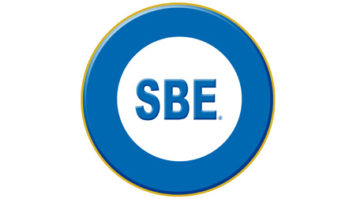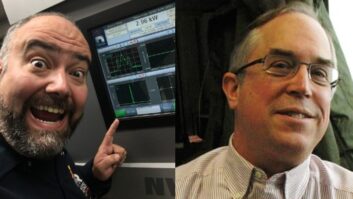Most modern equipment in today’s broadcast facilities has some form of IP-based interface. Satellite receivers, transmitter remote controls, RDS encoders, Internet streaming, automation systems, audio editors, transmitters, studio-transmitter links and content delivery systems are prominent examples.
The Associated Press recently transitioned to Internet-based delivery of its data to affiliates. Some state news networks offer actualities, interview shows and other content on their websites, as do program syndicators.
Most music is delivered to stations over websites instead of mail-delivered CD. Commercial and music logs are scheduled on computer. Remote broadcasts can be sent to the studio digitally with command closures, making a board op unnecessary.
Keeper of the cloud
These technologies require hardware, software and reliable integration of both, often involving multiple servers. Announcers, account executives, traffic and office managers may require technical support on an immediate basis, albeit most times with questions of a relatively elementary nature.

Pecena uses a concept from Simon Wardley to illustrate that the most hazardous phase in learning is when you think you’re an expert.
Today’s broadcast engineer must be fluent and capable in the maintenance of these technologies.
“The broadcast industry has rapidly embraced an IT infrastructure,” says Wayne Pecena, director of engineering at Educational Broadcast Services in the Office of Information Technology at Texas A&M University. “As a result, the broadcast engineer must be knowledgeable in IP networking and IT technology to be successful.”
In the past an engineer had to be knowledgeable in audio, transmitters, possibly STL and remote broadcast gear.
“The industry has seen many technology migration or changes over time — tubes to transistors to microprocessors and so forth. The migration to an IT-based infrastructure is the current technology evolution. Job survival requires an immersion to the IT world.”
Why Subnet?
Understanding IP addressing and subnetting is essential to implementing IP networking. One question Pecena encounters is “Why subnet?” He replies:
Subnetting is most often used to optimize network performance by creating separate broadcast domains. These separate domains prevent unnecessary broadcast traffic and faults from propagating throughout the entire network by isolated to an individual segment. Network security can be enhanced along with applying levels of administrative control to network segments by organizing hosts into functional or logical groups. Subnetting is often used to more efficiently use IP address space. This is especially important in the IPv4 environment where address space may be at a premium. Efficient utilization allows increasing organizational demands to be met in a cost-effective manner.
A discussion of terms such as AoIP, VoIP, system administration, network security, file-based workflow and data center architecture can assist the engineer in comprehending what he or she needs to know to manage this new technology.
“Many devices have had an Ethernet jack and an IP address for some time now. I see the movement to transform how the content is handled within the infrastructure in that IP transport is used rather than baseband audio/video. The broadcast plant becomes a ‘cloud,’ and the broadcast IT engineer is the keeper of the cloud. In general, as all content is packaged in an IP format, the plant infrastructure (or cloud) looks more like a data center than the traditional broadcast plant. … IP networking is the foundation of this environment, where knowledge of workflow, system management and security make this happen.”
The presentation “The Broadcast Engineer in an IT World: What Do I Need to Know and How Do I Learn IT?” is part of Saturday’s SBE Ennes program “Video and Audio on IP to IPTV.” The presentation discusses the technology and educational resources to make an engineer capable and competent in an IT environment.












